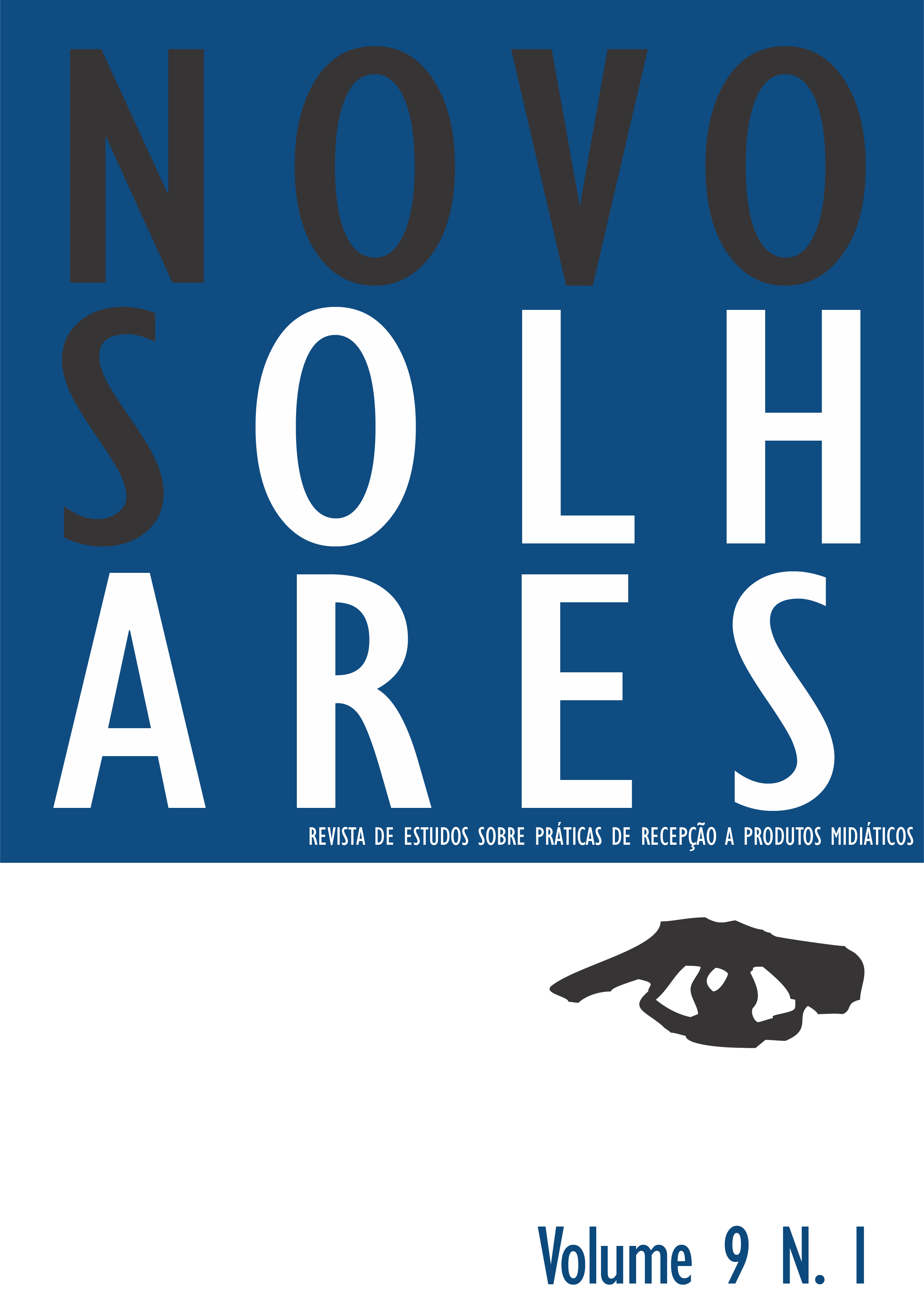Cine familiar y emigración
imagen, reconstrucción y memoria
DOI:
https://doi.org/10.11606/issn.2238-7714.no.2020.171987Keywords:
Emigration, Memory, Image, Family, PastAbstract
Family cinema is a very revealing tool for us to inquire into a visual knowledge of an intimate and personal past, itself useful to rebuild customs that would help us understand how contemporary societies have evolved. Our work is based in considering the words of Patricia Zimmerman, its core location inside the 20th century’s audiovisual universe. For this author, the uniqueness of these movies lies in the way it is the viewer who takes over all audiovisual mechanisms. We propose to analyze an audiovisual piece that allows us to study in all its complexity a very concrete historical and social phenomenon: Spanish emigration during the second half of the 20th century, and how, within it, images were used to manage family memories or the reconstruction of the past.
Downloads
References
AUMONT, J. El ojo interminable. Cine y pintura. Barcelona: Paidós, 1997.
BETTETINI, G. La conversación audiovisual: problemas de la enunciación fílmica y televisiva. Madrid: Cátedra, 1986.
BORDIEU, P. Un arte medio. Ensayo sobre los usos sociales de la fotografía. Barcelona: Gustavo Gili, 2003.
CATALÁ, J. M. La imagen compleja: la fenomenología de las imágenes en la era de la cultura visual. Bellaterra: Universitat Autònoma de Barcelona, Servei de Publicacions, 2005.
CITRON, M. Home Movies and Other Necessary Fictions. Minneapolis: University of Minnesota Press, 1999.
CUEVAS, E. Imágenes familiares: del cine doméstico al diario cinematográfico. Archivos de la Filmoteca, nº 45, pp. 128-140, 2003.
CHALFEN, R. M. Sorrida, prego! La costruzione visuale de la vita quotidiana. Milano: FrancoAngeli, 1997.
GOMBRICH, E. H. Arte e ilusión. Estudio sobre la psicología de la representación pictórica: Madrid, Debate, 2002.
ODIN, Roger. El cine doméstico en la institución familiar. Efrén Cuevas (Edt.). La casa abierta. El cine doméstico y sus reciclajes contemporáneos. Madrid: DocumentaMadrid / Ocho y Medio, 2010.
REDONDO NEIRA, F. Las películas familiares como museos de lo cotidiano, en José Antonio Ruiz Rojo (coord.), En torno al cine aficionado. Actas del IV Encuentro de Historiadores, Guadalajara, Diputación de Guadalajara / CEFIHGU, 2007.
RICOEUR, P. La lectura del tiempo pasado. Memoria y olvido. Madrid: Universidad Autónoma de Madrid; Arrecife, 1998.
TISSERON, S. El misterio de la cámara lúcida. Fotografía e inconsciente. Salamanca: Ediciones Universitarias, 2000.
ZIMMERMAN, P. R. Reel Familias. A Social History of Amateur Film. Bloomington-Indianapolis: Indiana University Press, 1995.
Downloads
Published
Issue
Section
License
Proposta de Aviso de Direito Autoral Creative Commons
1. Proposta de Política para Periódicos de Acesso Livre
Autores que publicam nesta revista concordam com os seguintes termos:
- Autores mantém os direitos autorais e concedem à revista o direito de primeira publicação, com o trabalho simultaneamente licenciado sob a Licença Creative Commons Attribution CC Attribution-NonCommercial-NoDerivatives 4.0, que permite o compartilhamento do trabalho com reconhecimento da autoria e publicação inicial nesta revista.
- Autores têm autorização para assumir contratos adicionais separadamente, para distribuição não-exclusiva da versão do trabalho publicada nesta revista (ex.: publicar em repositório institucional ou como capítulo de livro), com reconhecimento de autoria e publicação inicial nesta revista.
- Autores têm permissão e são estimulados a publicar e distribuir seu trabalho online (ex.: em repositórios institucionais ou na sua página pessoal) a qualquer ponto antes ou durante o processo editorial, já que isso pode gerar alterações produtivas, bem como aumentar o impacto e a citação do trabalho publicado.



